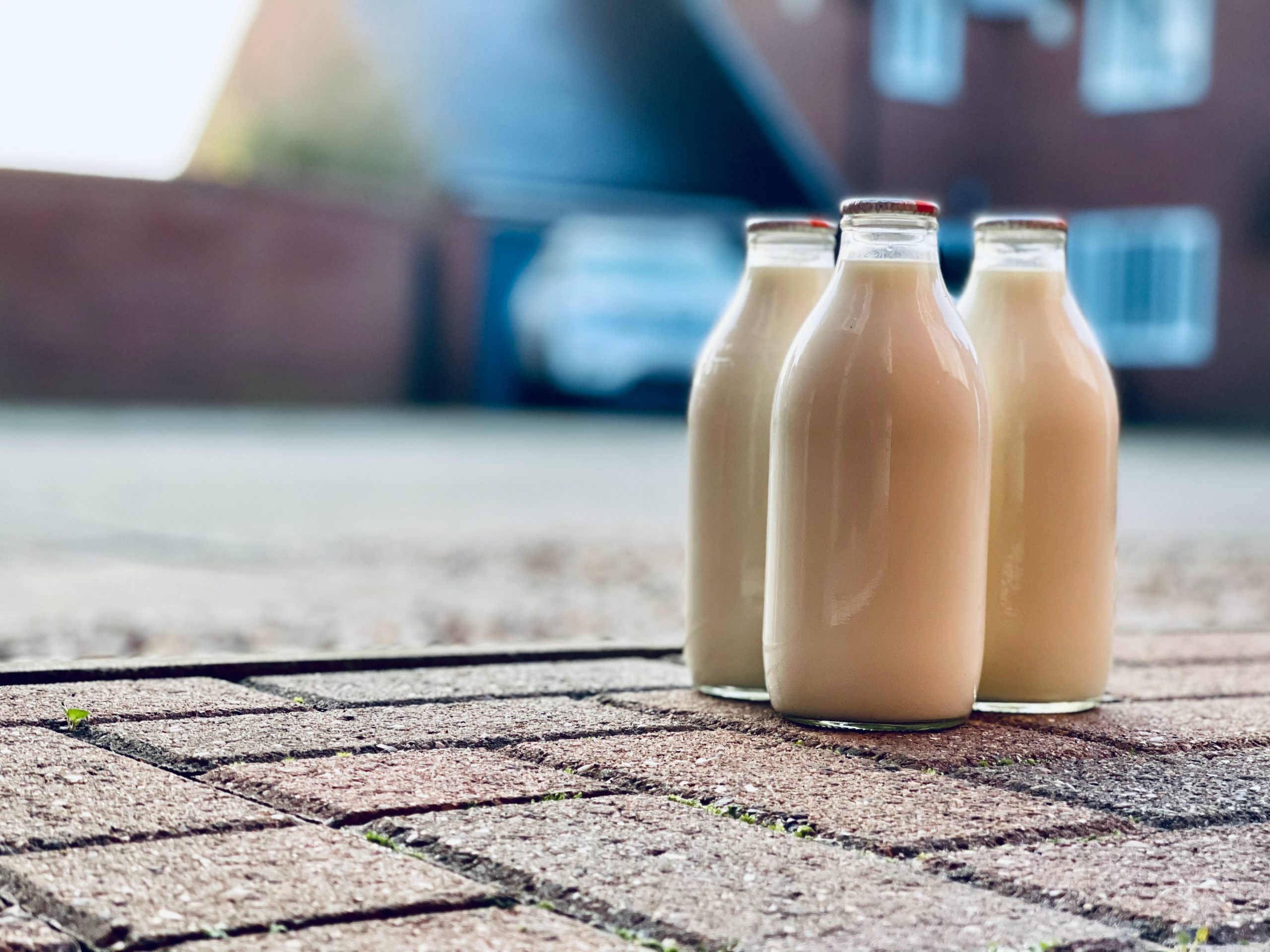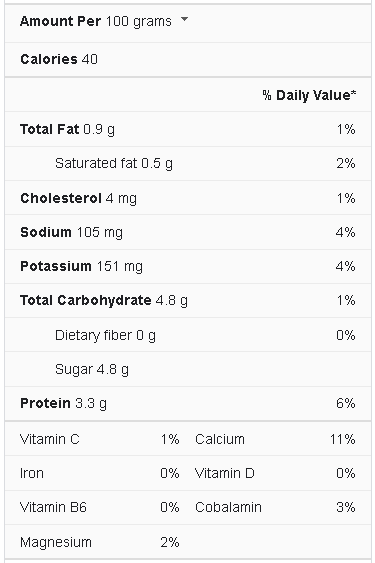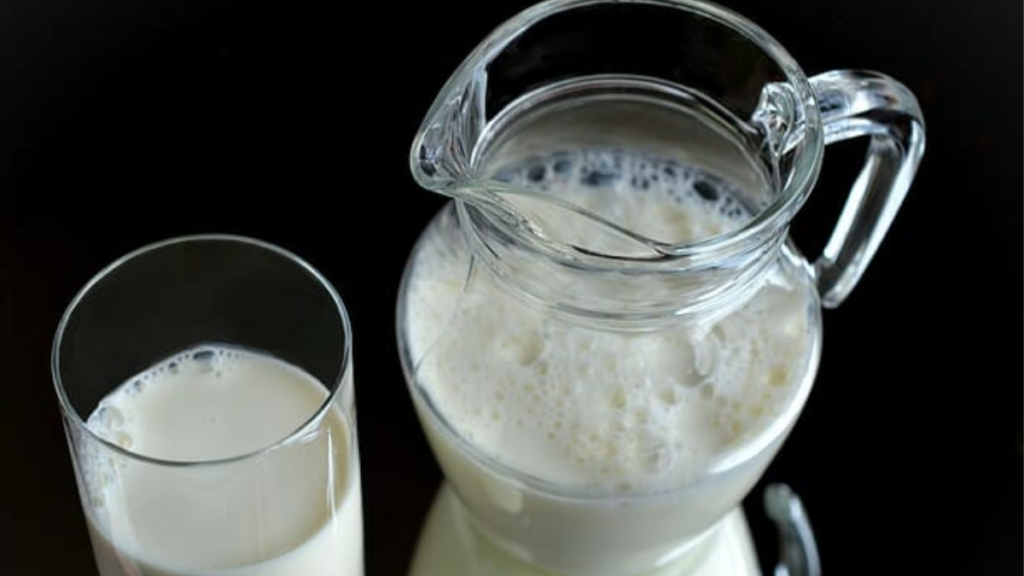There are many reasons why buttermilk can go wrong before its expiration date. This can be caused by improper storage or fluctuating temperature. When purchasing buttermilk, always check the expiration date. If the product is past its expiration date, it should be discarded. If the buttermilk has turned discolored or appears moldy, it should be discarded immediately. If the buttermilk looks chunky or is thick, it is likely to be spoiled.
Buttermilk Nutrition Facts
What Is Buttermilk?
Buttermilk is a misleading name because it does not include butter, and the liquid left behind after whole milk is churned into butter is buttermilk. This sort of buttermilk is no longer widely available in Western countries, although it is popular in Nepal, Pakistan, and India. Water, the milk sugar lactose, and the milk protein casein make up the majority of buttermilk today.
It’s been pasteurized and homogenized, and lactic-acid-producing bacteria cultures, such as Lactococcus lactis and Lactobacillus bulgaricus, have been added. Lactic acid raises the acidity of buttermilk and inhibits bacterial development, allowing it to last longer. It also provides buttermilk its somewhat sour flavor, which comes from bacteria fermenting lactose, milk’s principal sugar. Buttermilk has a thicker consistency than milk. The pH of the beverage is dropped when bacteria make lactic acid, and casein, the major protein in milk, hardens.
How To Tell When Buttermilk Is Bad?
Here are some easy ways to tell buttermilk is gone bad:
Smell
Buttermilk has a somewhat tangier scent than regular milk or other dairy products, but as the product ages, the smell becomes sourer. It can be challenging to identify a particularly sour scent during the preservation of buttermilk, but once it has gone fully sour, you will be able to smell it right away. When smelling a newly opened carton of buttermilk, keep in mind that a closed carton will have a more pungent scent because the odor hasn’t had a chance to escape. Buttermilk should have a buttery, tangy aroma but should not be sour.
Look
By simply glancing at it, you can tell if buttermilk has gone wrong. Buttermilk has a faint tint when it spoils. Mold may grow on the surface and around the lid of buttermilk that has passed its expiration date, and this is due to increased bacterial growth. If there is any mold in the buttermilk or on the container, dump it immediately; the risk of foodborne illness from drinking bacteria-ridden buttermilk is not worth it.
Texture
Looking at the texture (and feeling it if you’re daring enough) is one definite way to determine if buttermilk has gone wrong. Buttermilk has a thick, clumpy texture when it starts to go wrong. It will be difficult to pour, and big clots will form. There is no way to save buttermilk that has become lumpy because it is almost certainly ruined. Take notice that buttermilk has a tiny number of lumps by nature; however, this should not affect how the buttermilk has been poured, and the small clumps should break up when whipped and blended in with the other components.
Taste
You could have missed the other indicators of sour buttermilk, so the next best thing is to taste it. Although buttermilk has a slightly tangy flavor, it should be discarded if it tastes sour or odd in any manner. Buttermilk should have a buttery flavor with a hint of creaminess, which fades as the buttermilk spoils.
Expiration Date
If you’re not sure if your buttermilk has gone wrong by looking at the other indicators, check the expiration date. It should be fine to use if you can’t tell whether it’s off by smelling, tasting, or looking at the texture, and it’s before the expiration date. If the buttermilk has been open for more than a week, it should be discarded.
Shelf Life Of Buttermilk
According to the USDA, buttermilk can be kept in the refrigerator for up to two weeks. It’s also possible to freeze it for up to three months. Keep in mind that buttermilk may have been mishandled during shipping or at the store and may have been left out at room temperature. In this instance, it may spoil before the expiration date of two weeks.
If you wish to consume buttermilk or use it in uncooked or cooked foods, you should utilize it as soon as possible. Buttermilk is finest when used fresh in drinks and uncooked meals (like buttermilk ranch dressing). Buttermilk thickens as it ages, and its buttery flavor begins to fade. Because of its acid properties, it can still be used for baking and meat tenderizing.
How To Extend The Shelf Life Of Buttermilk?
Buttermilk should be kept refrigerated and left out at room temperature. A carton that has not been opened will last longer than one opened. When opening the carton and pouring from it, practice excellent hygiene by keeping your fingertips away from the carton’s lip and never drinking straight from the carton. Bacteria, yeast, and mold can all be introduced to buttermilk through these practices.
Freezing Buttermilk
If you wish to use buttermilk in baking, you can freeze it. It would help if you didn’t use frozen buttermilk for drinking or uncooked dishes since freezing changes the consistency and causes it to clump and separate. It will retain its acid content, which is desirable for baking because it aids in the rise of baked goods. It can also be used to tenderize meat.
Powdered Buttermilk
Switch to powdered buttermilk if you’re tired of your buttermilk going bad before you’ve finished using it. It has a reasonably long shelf life at room temperature, and there is never any waste because you can manufacture just what you need. Rather than being consumed, powdered buttermilk is commonly utilized in baked products, and you can also use substitutes for buttermilk.
How Healthy Is Buttermilk?
Here are some health benefits of buttermilk:
May be Easier To Digest Than Other Dairy Products
Buttermilk’s lactic acid makes its lactose content easier to digest. Lactose is the sugar found naturally in dairy products. Many people are lactose intolerant, lacking the enzyme required to digest this sugar. Lactose intolerance affects about 65 percent of persons globally after they reach adulthood. Because the bacteria break down the lactose, some persons with lactose sensitivity can drink cultured dairy products with little to no adverse effects.
May Support Strong Bones
Buttermilk is high in calcium phosphorus, and, if fortified with vitamin D, vitamin D. Vitamin K2 is abundant in full-fat types. Many people don’t receive enough nutrients, which are crucial for maintaining bone strength and preventing degenerative bone illnesses like osteoporosis. Phosphorus intakes 2–3 times greater than the recommended dietary requirement of 700 mg per day enhanced bone mineral density by 2.1 percent and bone mineral content by 4.2 percent in a 5-year trial of adults aged 13–99. Higher calcium consumption was similarly linked to a higher intake of phosphorus-rich foods. In adults with normal blood calcium and phosphorus levels, eating more calcium and phosphorus was connected to a 45 percent lower overall risk of osteoporosis.
May Improve Oral Health
Periodontitis is a condition in which your gums and supporting components of your teeth become inflamed. Periodontal bacteria are the source of this fairly prevalent illness.
Buttermilk and other fermented dairy products may have anti-inflammatory properties in the skin cells that line your mouth. Calcium intake from fermented dairy foods has been linked to a considerable reduction in periodontitis, and this impact does not appear to be present in nondairy meals. This could be especially beneficial for those suffering from oral inflammation caused by radiation therapy, chemotherapy, or Crohn’s disease.
May Help Lower Your Cholesterol Levels
Compared to a placebo, daily consumption of 45 grams, or about 1/5 cup, of reconstituted buttermilk (buttermilk powder combined with water) reduced total cholesterol and triglycerides by 3% and 10%, respectively, in a small 8-week study of 34 individuals. Furthermore, participants with high LDL (harmful) cholesterol levels at the start of the research had a 3% drop in this kind of cholesterol. Buttermilk’s sphingolipid molecules may be responsible for this action by preventing cholesterol absorption in the intestines. Sphingolipids are found in buttermilk’s milk fat globule membrane (MFGM).
Conclusion
If you can’t remember the date, buttermilk isn’t rancid. It will only go wrong if you’ve opened it. But, it may be sour if it’s gone past its expiration date. It will also become sour if you’ve mishandled it. If it’s past its expiration date, you should discard it. If the milk has mold, it’s terrible. If the milk is spoiled, you can tell by the look. It will have a bluish-green color, and it will be too thick to pour. If it looks too yellow, you should toss it. Then, check the expiry date. It’s best to throw out any sour buttermilk that has passed its expiration date. However, if the product is past its sell-by date or opened for more than two weeks, you can keep it in the fridge.



